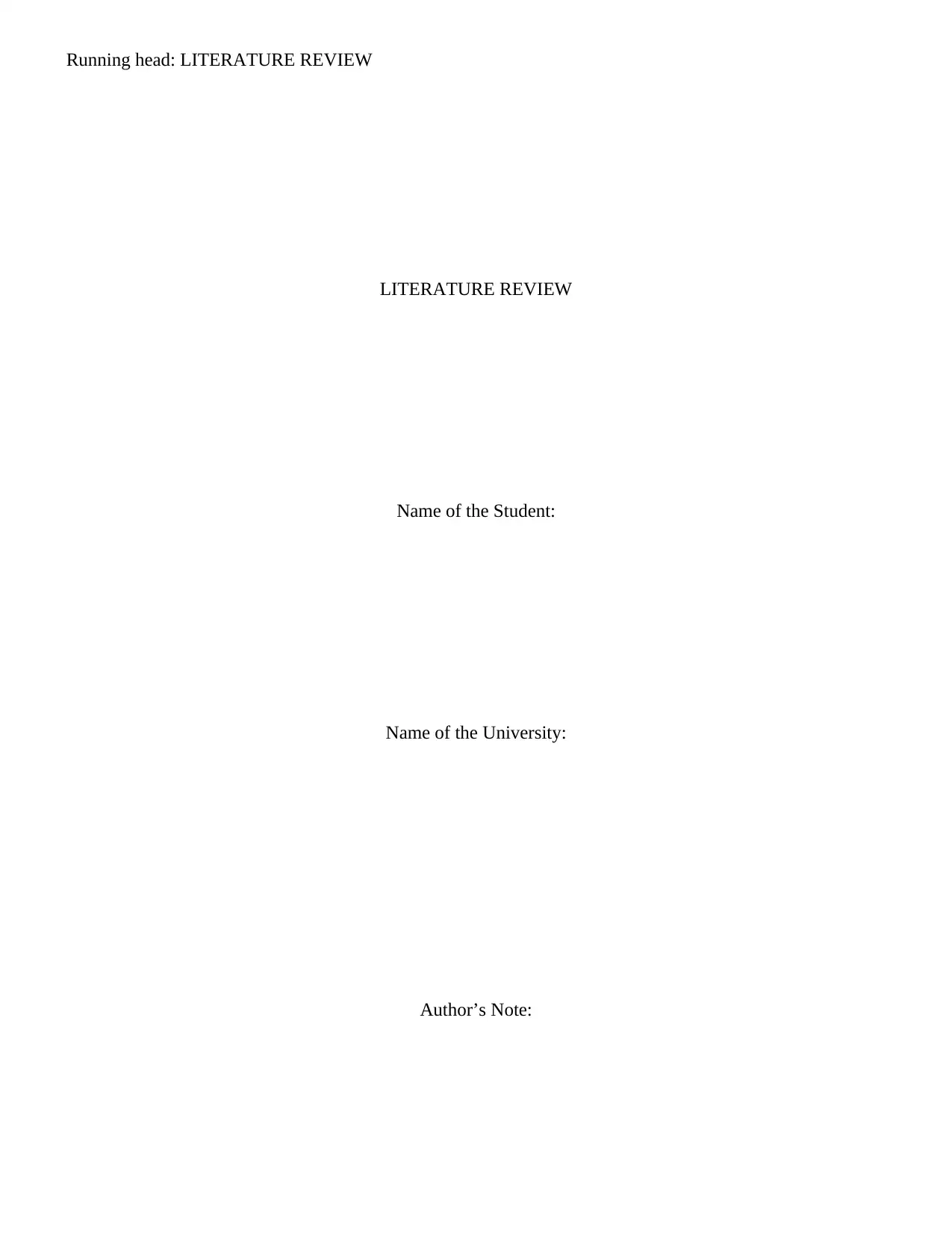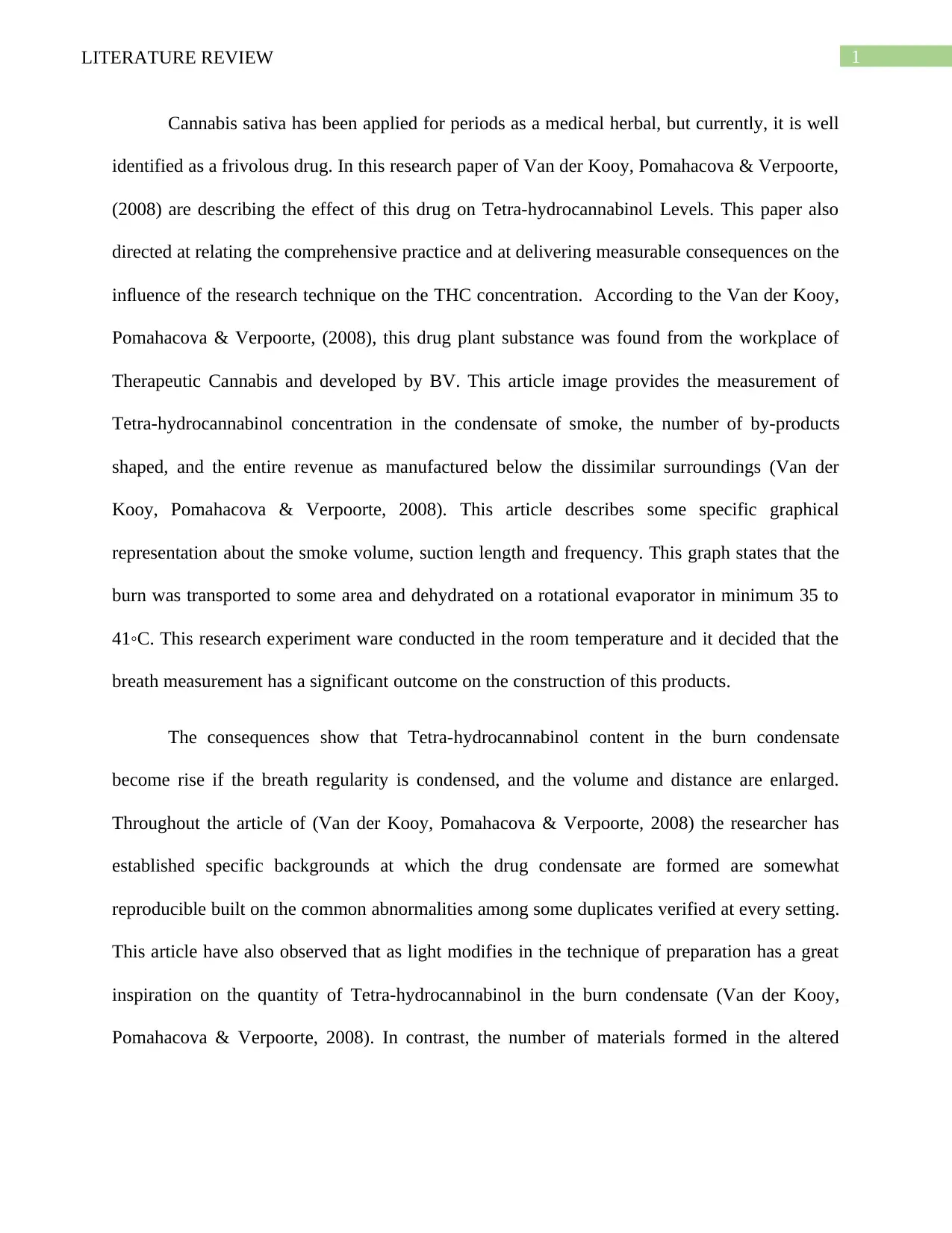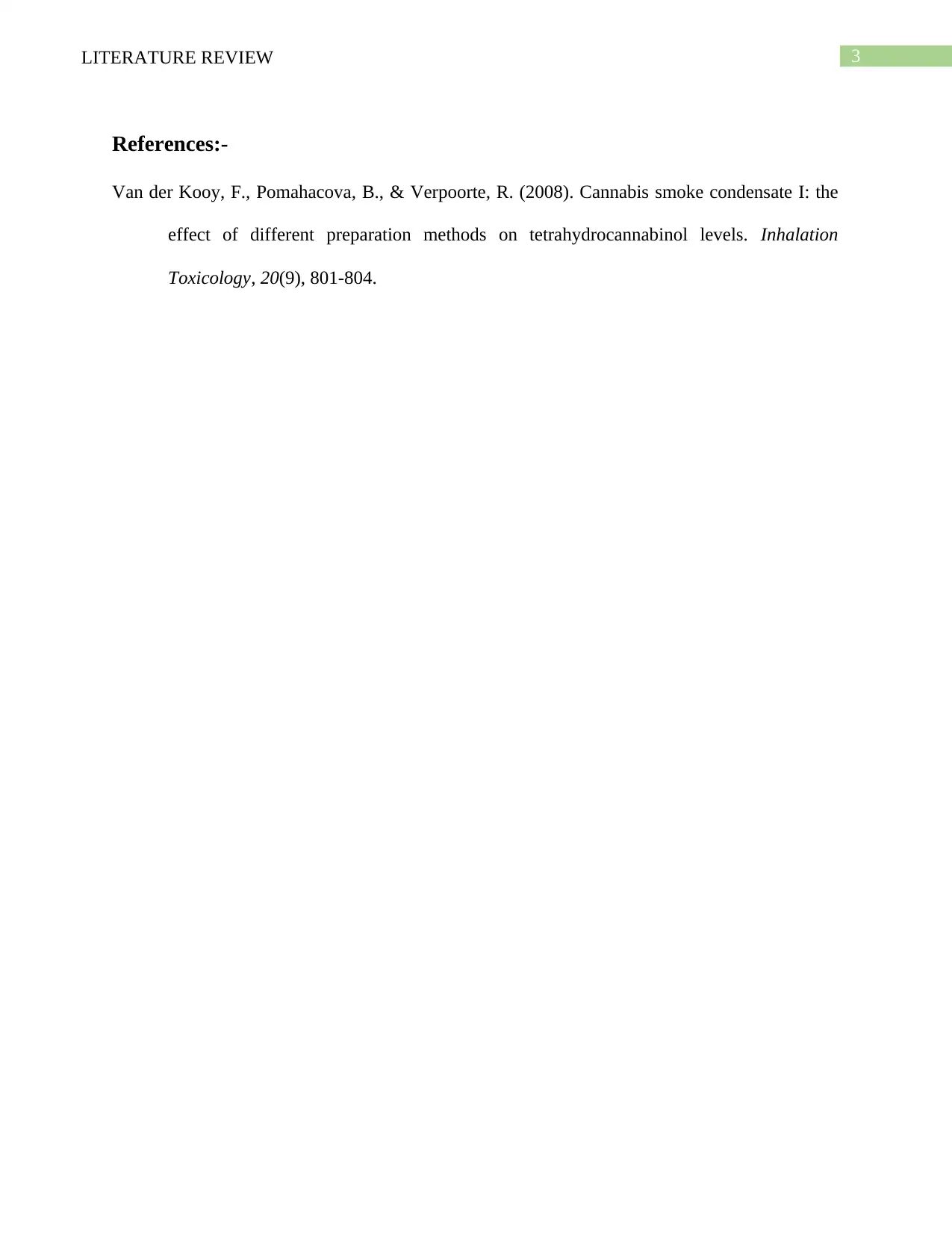Analysis of THC Levels in Cannabis Smoke Condensate: Literature Review
VerifiedAdded on 2022/09/26
|4
|445
|21
Literature Review
AI Summary
This literature review examines the effects of different preparation methods on Tetrahydrocannabinol (THC) levels in cannabis smoke condensate. The study by Van der Kooy, Pomahacova & Verpoorte (2008) investigates the impact of puff frequency, length, and volume on THC concentration, along with the formation of by-products. The research was conducted at room temperature, revealing that a reduced breath frequency, along with increased volume and distance, led to an increase in THC content. The study also highlights the influence of light during preparation on THC quantity. The findings suggest that the method of preparation significantly impacts the amount of THC in the condensate. This review combines existing methodologies to provide quantitative results on the preparation method's influence on THC levels in cannabis smoke.
1 out of 4






![[object Object]](/_next/static/media/star-bottom.7253800d.svg)